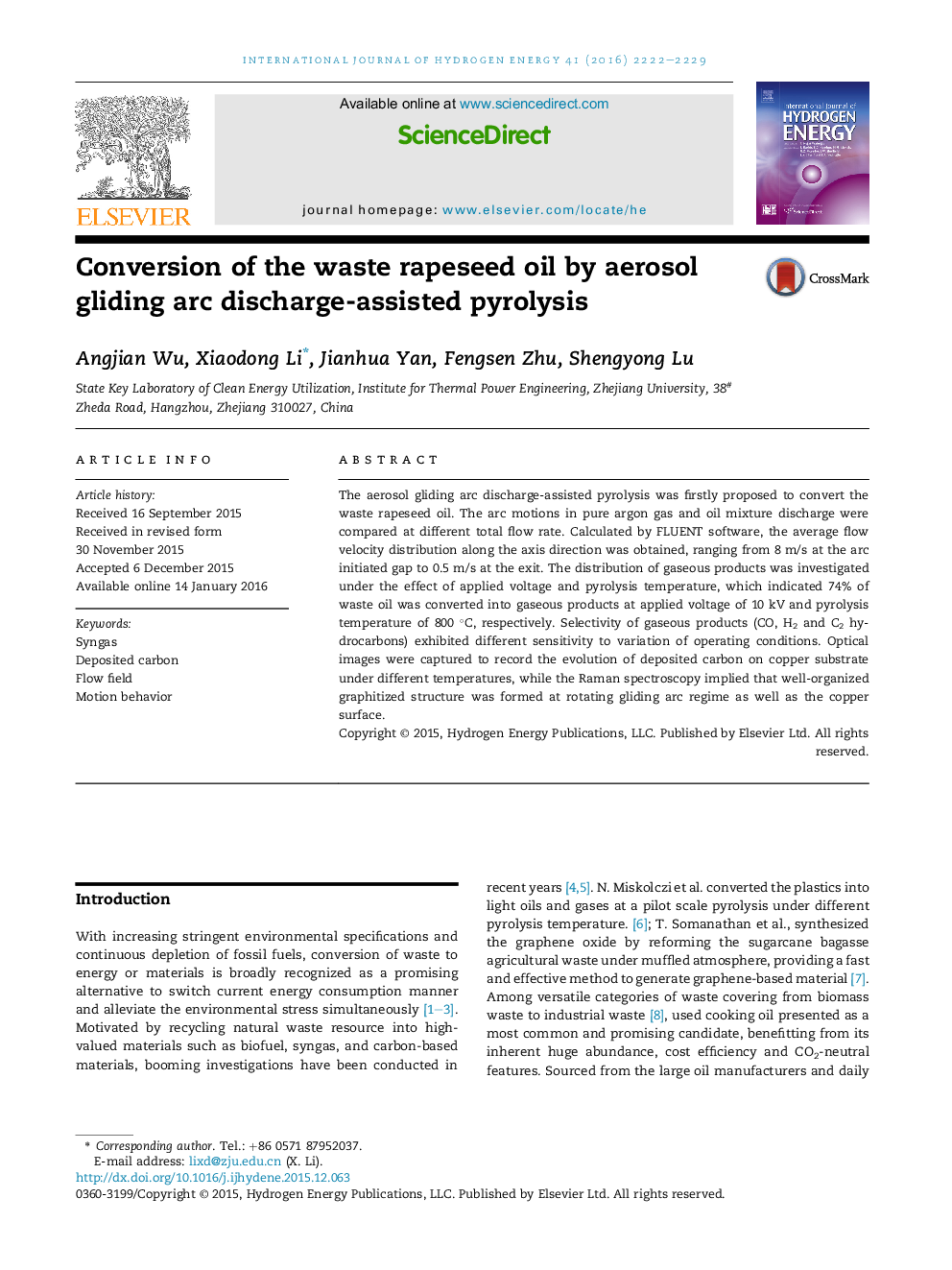| Article ID | Journal | Published Year | Pages | File Type |
|---|---|---|---|---|
| 7711677 | International Journal of Hydrogen Energy | 2016 | 8 Pages |
Abstract
The aerosol gliding arc discharge-assisted pyrolysis was firstly proposed to convert the waste rapeseed oil. The arc motions in pure argon gas and oil mixture discharge were compared at different total flow rate. Calculated by FLUENT software, the average flow velocity distribution along the axis direction was obtained, ranging from 8 m/s at the arc initiated gap to 0.5 m/s at the exit. The distribution of gaseous products was investigated under the effect of applied voltage and pyrolysis temperature, which indicated 74% of waste oil was converted into gaseous products at applied voltage of 10 kV and pyrolysis temperature of 800 °C, respectively. Selectivity of gaseous products (CO, H2 and C2 hydrocarbons) exhibited different sensitivity to variation of operating conditions. Optical images were captured to record the evolution of deposited carbon on copper substrate under different temperatures, while the Raman spectroscopy implied that well-organized graphitized structure was formed at rotating gliding arc regime as well as the copper surface.
Related Topics
Physical Sciences and Engineering
Chemistry
Electrochemistry
Authors
Angjian Wu, Xiaodong Li, Jianhua Yan, Fengsen Zhu, Shengyong Lu,
